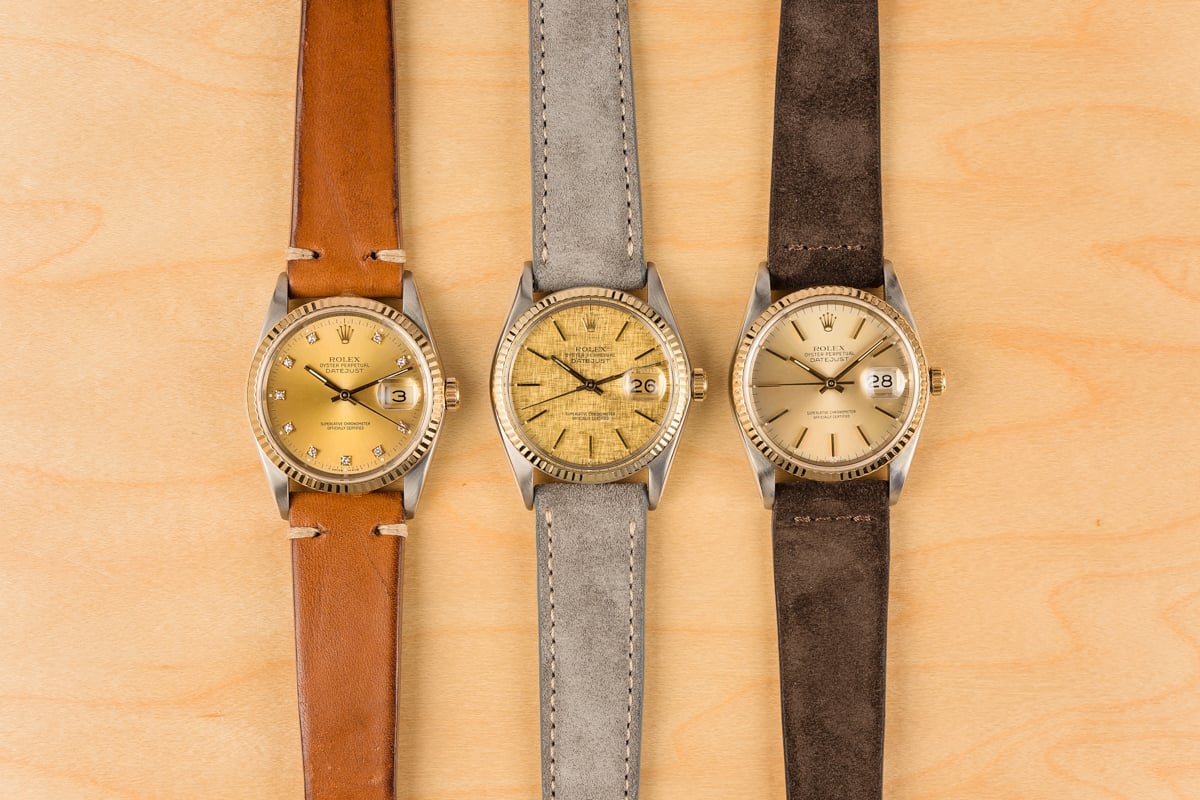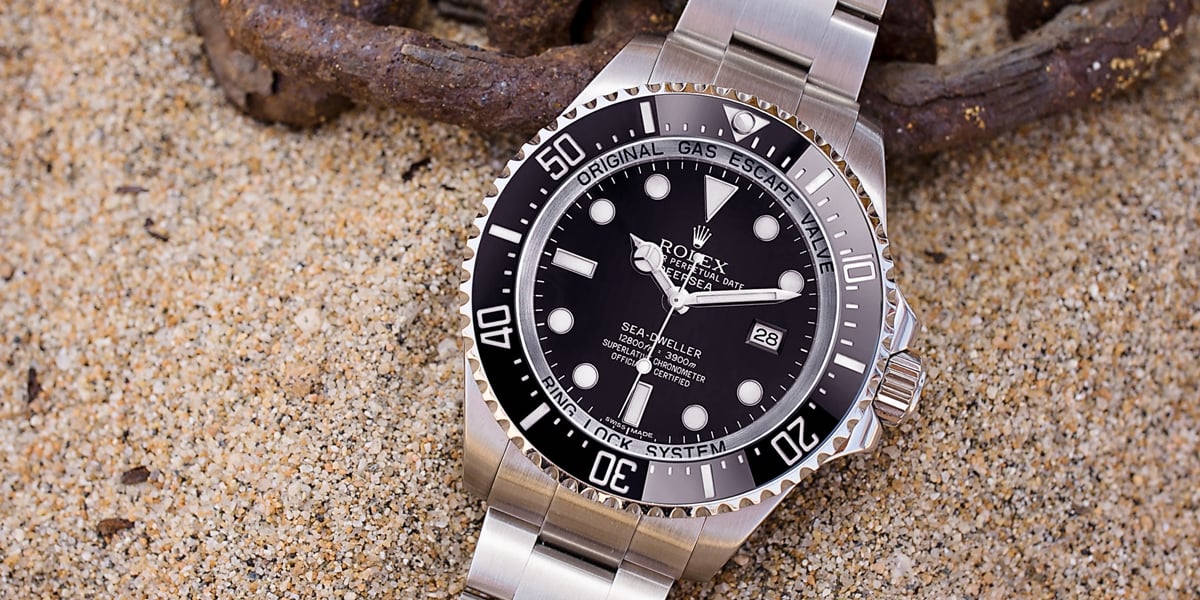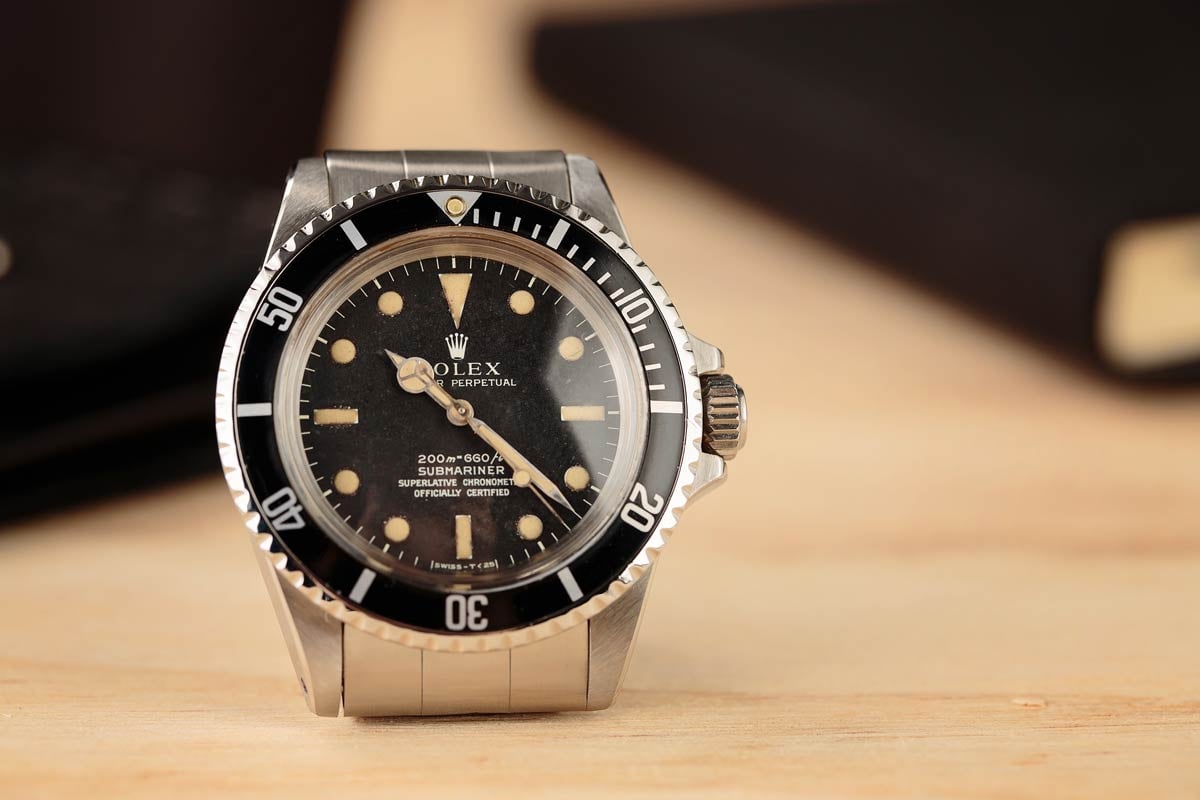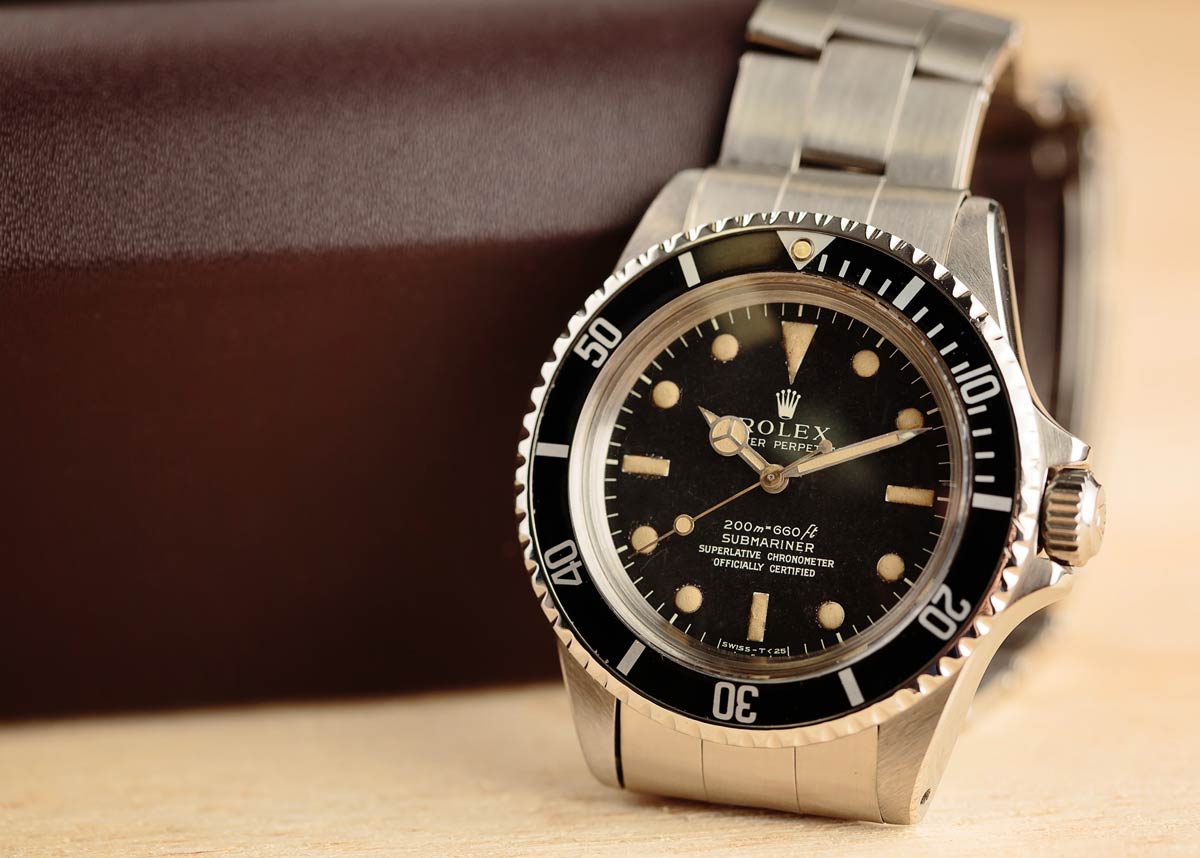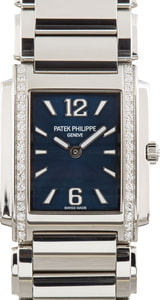Far from the status symbol it is today, the Rolex Submariner was originally designed to be a precision tool watch for diving rather than a luxury item for the well-to-do. As such, the Submariner was exclusively available in stainless steel for the first 16 years of its history. Additionally, since it was intended to be a timekeeping companion for SCUBA divers to use while underwater, a date complication was deemed to be an unnecessary feature. Consequently, all early Submariner iterations, including the references 5512 and Rolex 5513, featured pragmatic time-only black dials and robust steel construction (Submariners with date windows and gold Submariners would eventually be introduced in 1969).
To many, the references 5513 and Rolex 5512 mark the end of the classic vintage Submariner era. These were the last non-date displaying Submariner references to feature acrylic crystals. To the untrained eye, the references 5512 and 5513 are near-identical watches. Both references share the same stainless steel case, crown, bezel, and bracelet, and both watches get fitted with black dials, time-only displays, and acrylic crystals. Plus, both references include crown guards—a feature that was non-existent in all the Submariners that came before. In addition to being visually similar, reference 5512 and reference 5513 have production periods that overlap.
So what exactly are the differences between the Submariner 5512 and 5513? And is one better than the other? Keep reading as we highlight everything you need to know about these two famous vintage Rolex sports watches.
Timeline
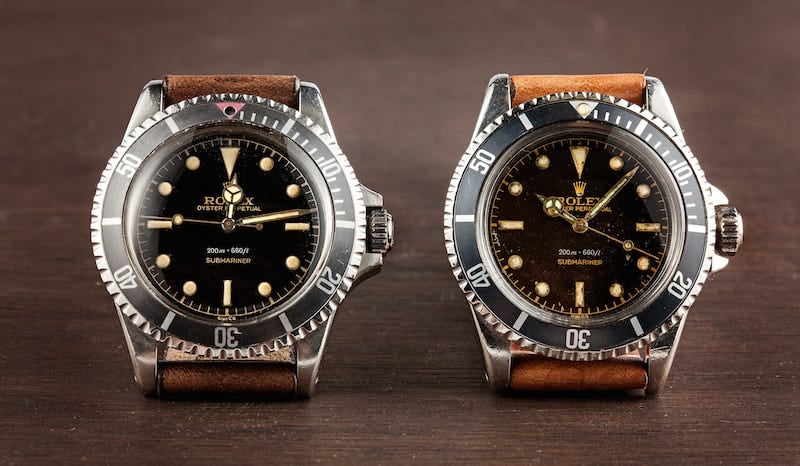
- 1953- 1959: Rolex releases several Submariner references, all without crown guards
- 1959: Rolex introduces the reference 5512 as the first Submariner with crown guards
- 1962: Rolex introduces the references 5513 s the non-chronometer version of the 5512
- 1967: Rolex replaces the gilt-gloss dials of the 5512 and 5513 with matte black dials with white text
- 1969: Rolex switches the water depth ratings on both the 5512 and 5513 so that they display feet first, then meters (“660ft=200m” replaces “200m=660ft”)
- 1972 – 1976: Rolex makes the Submariner 5513 “MilSub” modifications made specifically for the British MoD
- 1980: Rolex discontinues the Submariner 5512
- 1982: Rolex replaces the matte black dials of the 5513 with glossy black dials and white gold framed indexes
- 1989: Rolex discontinues the Submariner 5513
The Submariner 5512 Came First
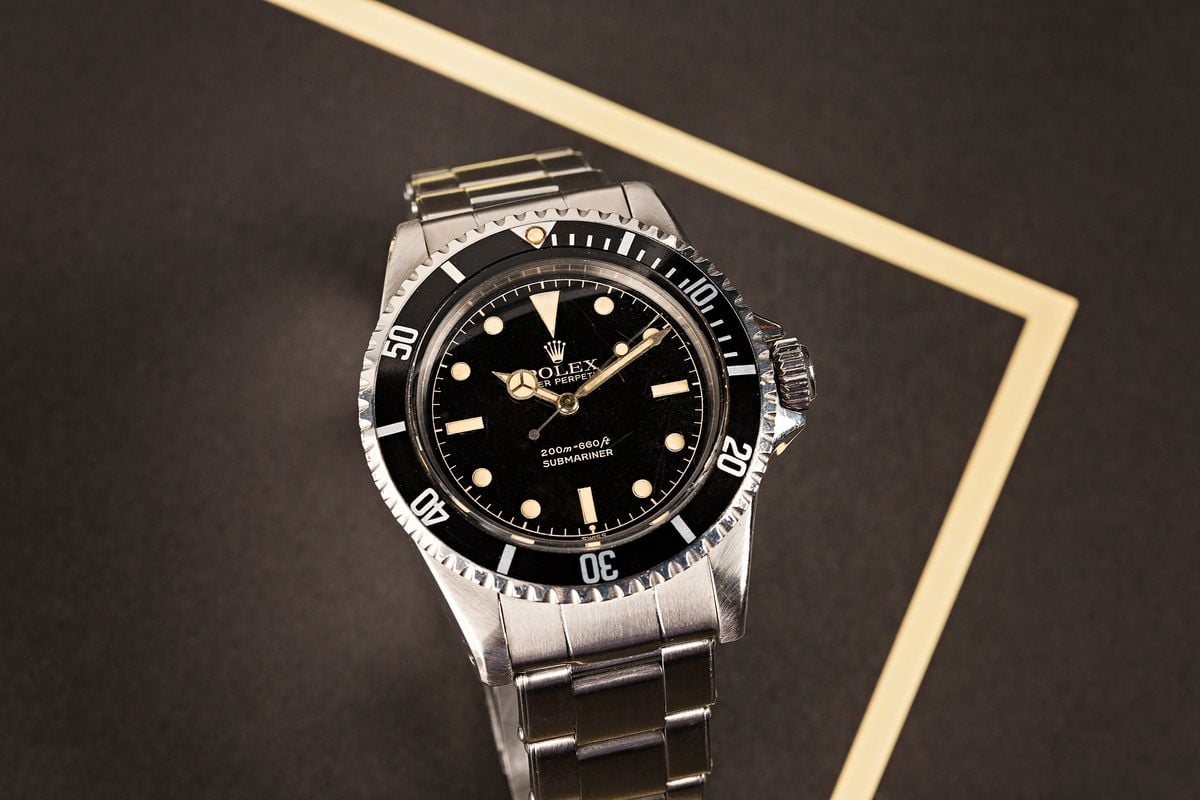
Rolex introduced the Submariner 5512 in 1959 as the first reference in the collection to feature crown guards. All the other Submariner references that came before, made from 1953 until 1959, did not include protective shoulders around the winding crown. The thinking behind adding the crown guards was that they would make the Submariner more durable by reducing the risk of an accidental bump snapping the winding crown off. The addition of the crown guards increased the size of the Submariner too, expanding to 40mm in diameter from the previous 38mm size.
Speaking of crown guards, it’s evident that Rolex experimented with their shapes before it decided on the final one. First came square crown guards, followed by pointed crown guards, then finally, the rounded crown guards that we’re familiar with today.
- 5512 Square crown guards (SCG): 1959
- 5512 Pointed crown guards (PCG): 1959 – 1963
- 5512 Rounded crown guards: 1963 – 1980
As you may imagine, Submariner 5512 with square crown guards are exceedingly collectible thanks to their rarity.
It’s also worth pointing out that Rolex fitted the earliest 5512 models with the Caliber 1530 movement, which was not chronometer-certified. As a result, the dials of these early 5512 Submariners only had two lines of text: the water-resistance depth rating and the Submariner name. As we’ll see, this will soon change.
Submariner 5512 Key Features
Production Years: 1959 – 1980
Case: 40mm, stainless steel
Bezel: Rotating; black aluminum insert with a 0-60min scale
Crystal: Acrylic
Dial: Black; gilt-gloss or matte
Lume: Radium (very early models) or Tritium
Caliber: 1530 (non-chronometer; very early models) or 1560 or 1570; automatic movements
Click here to learn more about the Rolex Submariner 5512.
The Submariner 5513 Soon Followed
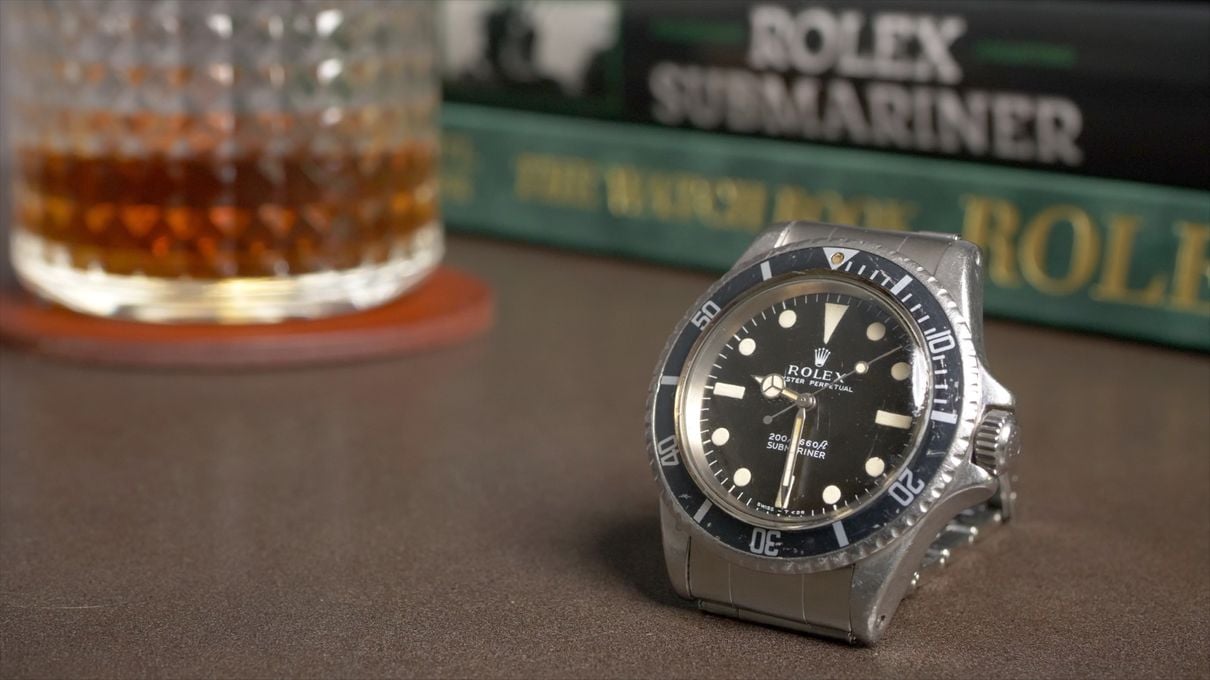
A few years after the debut of the 5512, Rolex released the Submariner 5513. Although the Submariner 5513 looked almost identical to the 5512, Rolex anointed it as the non-chronometer version of that Submariner. In short, the Submariner 5512 became chronometer-certified (complete with Caliber 1560, then 1570) and the Submariner 5513 ran on the non-chronometer Caliber 1530 (then 1520.)
Therefore, from 1962 onwards, when Rolex began producing the 5512 and 5513 simultaneously, the quickest way to tell these two Submariners apart was to look at the dial. The Submariner 5512 included the “Superlative Chronometer Officially Certified” text while the Submariner 5512 did not.
Side note, since the Submariner 5513 was introduced in 1962, the earliest examples also had pointed crown guards like the Submariner 5512 of the same era.
Submariner 5513 Key Features
Production Years: 1962 – 1989
Case: 40mm, stainless steel
Bezel: Rotating; black aluminum insert with a 0-60min scale
Crystal: Acrylic
Dial: Black; gilt-gloss or matte black or glossy black with white gold surrounds
Lume: Radium (very early models) or Tritium
Caliber: 1530 or 1520 non-chronometer automatic movements
Click here to learn more about the Rolex Submariner 5513.
How the Submariner 5512 and 5513 Evolved
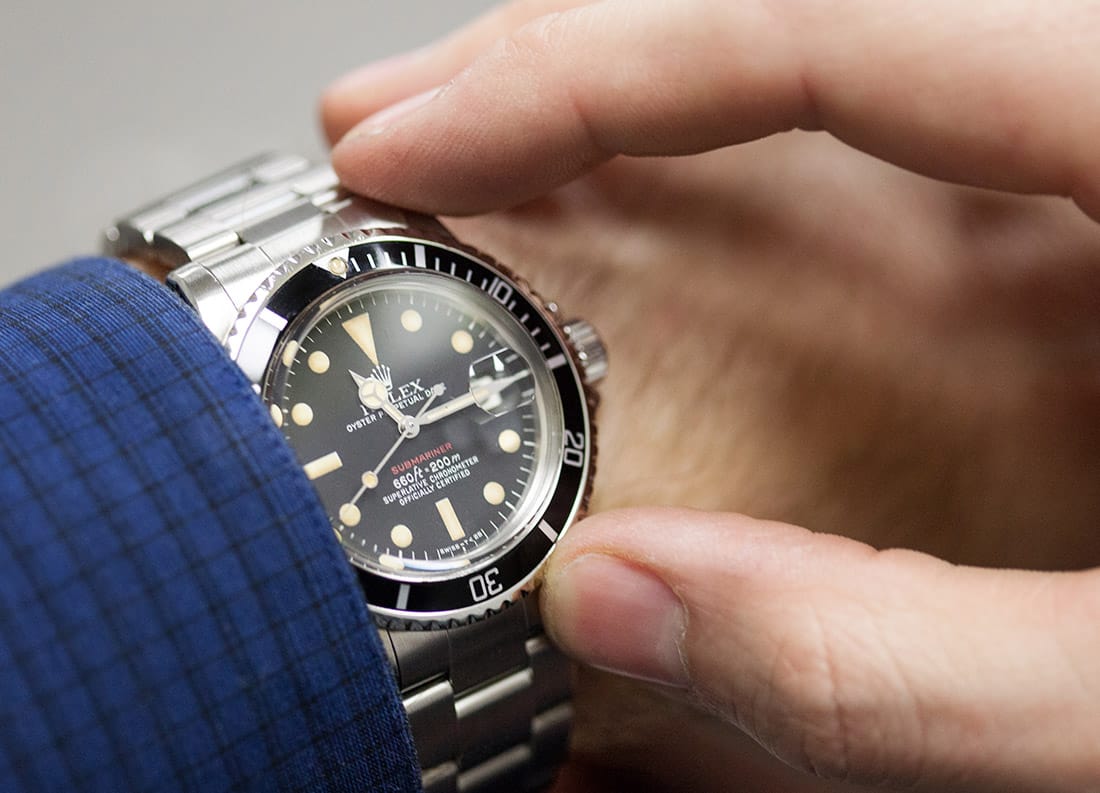
We’ve already touched upon a few key changes that Rolex made to Submariner 5512 and 5513 in the early years. However, aside from crown guard shapes and chronometer certifications, these two long-running vintage Rolex references saw a few other key modifications throughout their respective histories. That’s to be expected since the Submariner 5512 was in production for 21 years and the 5513 was in production for 27 years.
First up, there’s the dial evolution. Submariner 5512 and 5513 made until 1967 have what collectors refer to as gilt-gloss dials. These dials are characterized by glossy black backgrounds and warm gold-colored text. Rolex then replaced these with matte black dials with white printing. This dial style continued until the end of the 5512’s manufacturing run. However, because Rolex produced the 5513 for almost a decade longer, it received another dial update in 1982. This time, the black dials of the Submariner 5513 returned to a glossy sheen but the text remained white and the hour markers benefitted from white gold surrounds – a similar style to what you’ll find on the most current Submariners.
Another update occurred quite early in the history of the Submariner 5513 and 5512 watches. It had to do with how the water resistance of the watch was displayed. Originally, both references had the meters depth first, followed by the feet: 200m=660ft. However, in 1969, Rolex switched it up so that feet came first: “660ft=200m.” It’s assumed that Rolex made this move to appeal to the U.S. market, but as with most things to do with Rolex, this is simply speculation since the watchmaker hardly ever makes a public comment – especially on its vintage references. While this is a subtle upgrade, the values of “meters first” Submariner 5512 and 5513s are typically higher than “feet first” variants.
There are also a few rare (and thus, highly collectible) variants we should mention. For instance, there are some (very few, in fact) Submariner 5512 and 5513 examples with Explorer-style dials, characterized with Arabic numerals at 3, 6, and 9. Then there’s the exceptionally coveted MilSub 5513 (made from 1972 until 1976) commissioned by the British Ministry of Defense. These military-issued Submariners include distinct bezels with one-minute increments, sword-shaped hands, a circle-T logo on the dial to indicate the use of tritium, and lugs with fixed bars instead of spring bars.
Two Key Vintage Rolex Watches
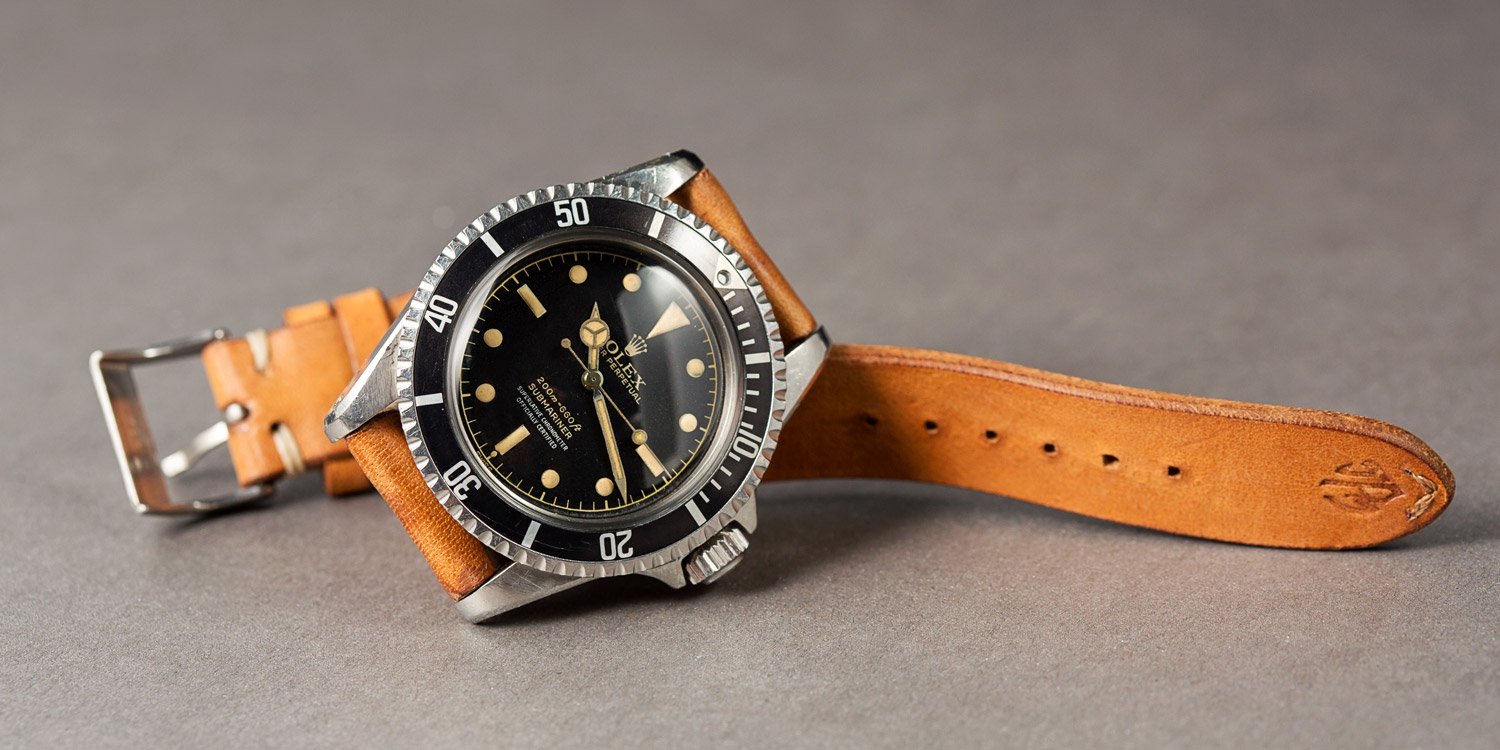
To sum up, most reference 5512 Submariners contained COSC-rated movements while reference 5513 never did. Due to this difference, the vast majority of reference 5512 include “Superlative Chronometer / Officially Certified” on their dials while Submariner 5513 watches do not. The difference between the four-liner 5512 and the two-liner 5513 is essentially as simple as that.
Rolex stopped making the Submariner 5512 in 1980 and the Submariner 5513 in 1989. Both of these vintage Submariner references are highly sought-after by collectors; however, due to the longer production run of reference 5513, examples are more plentiful than reference 5512.
As both models pre-date the adoption of synthetic sapphire crystals, they possess an inherently vintage look and feel, making them excellent alternatives for those seeking a classic Submariner that is visually distinct from later-era and contemporary references.


